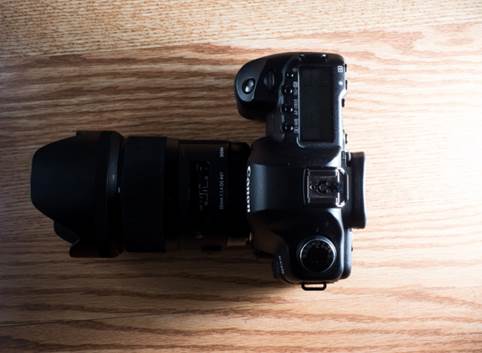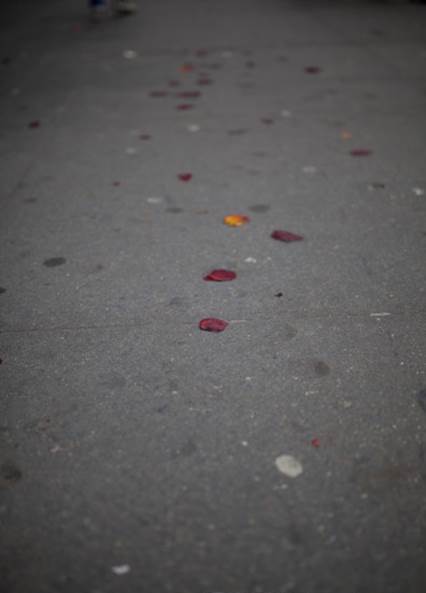We have completed our first
impression on the Sigma 35mm f1.4 EX, and the lens moved me so much that I now
have turned to the Sigma. We spent much more time than other reviewers for a
suitable reason. First of all, we had to send the lens to Sigma to ensure it
was well modified. The results that we received were excellent, but there might
have been some magic here that we totally were not able to see. The lens turned
back in two days: it showed that everything was excellent and worked just well.
But afterwards, we tried a few different
things: we put the lens on a film camera and tried it with the Fuji Pro 400H.
So, it works like that?

The
Sigma 35mm f1.4 EX HSM
For this review, we used the Sigma 35mm
f1.4 EX with the Canon 5D Mk II.
Interaction
The Sigma 35mm f1.4 EX is a pretty big
lens, but it is still a match with the size of the Canon 35mm f1.4 LUSM. The lens
hood does not make the package smaller at all.
Sigma’s 35mm F1.4 is characterized by a lot
of minimalist spaces except the focusing ring, focusing switch, and the
depth-of-field scale/focusing-distance scale. Part of this minimalist is
emphasized by the overall elegant design for which we will go into more detail
later.
There is no cap, the lens becomes smaller, fairly
small. The lens also feels easier to control in your hands to remove the lens
hood. However, we encourage all users to attach the shutter to protect the
lens.

The
Sigma 35mm f1.4 EX is a pretty big lens
Sigma sets a depth scale on the lens,
though I really do not understand why. The depth scale is almost useless for zone
focusing. It would be a better approach if there were an efficient and working
scale. However, this lens was designed for completely automatic focus, and it did
a good job on this aspect.
Build Quality
The 35mm f1.4 gives a feel that the outer
is made of metal, but the reality is not so. It is hard plastic that feels like
Zeiss and Hasselblad. The Germans have to worry about and fear the launch of
this lens.
This lens survived through common tumbling
and messes in my camera bag, my movement on the NYC subway system and
throughout New York. It even traveled with me to Vegas for CES 2013 and there
was no problem with the TSA’s rudimentary shelter.
Unfortunately, it would have been better if
it is the weather barrier.
Autofocus
Put this lens on the Canon 5D Mk II and it
will focus as fast as Canon’s 35mm f1.4 L USM. And how about Canon’s DSLR series
why? We have experienced with such performance. The autofocusing capability of
this lens is very fast, and it does not matter physically for a 35mm f1.4 quality
to focus faster.
Of course, there are faster autofocus
lenses are being produced out there.
When we checked on the Canon EOS Elan 7,
the lens still autofocused extremely fast.
Ease of Use
Sigma's 35mm f1.4 EX was designed to
autofocus. With that statement, all you need to do is point and shoot. You want
autofocus for this lens? For that, you will need a camera with a bright 100%
viewfinder (like the 5D Mk III) or turn to Live View mode. If you are filming,
we are sure that you will choose the latter.
The other option: A new focusing screen
designed for manual focus for the lens. But to get the best performance we
suggest using a newer camera body or stopping providing that you are using an
older camera.
Image Quality
This lens gets many details when shooting
wide, but as other Zeiss lenses, it adds to the look. Files have an almost
medium format quality which is positively jaw-dropping.

The
almost medium format quality
At around f3.5, you will almost never see any
signs of blurring. When compared with Canon's 35mm f1.4, the lens vignettes
more, but there are some main points supporting it in other areas. Several
times in this review, we felt that the lens hood made it worse.
Of course, we should point out that
vignette can easily be removed in Adobe Lightroom 4, so please make a copy and
stop complaining!
The quality of bokeh from the lens is
actually quite soft. Again, there's something about it that almost reminds me
of Maymiya’s or Bronica’s lenses, which had some beautiful bokehs. Due to the
fact that there is no micro-contrast in this lens, you will not see your object
standing out from bokeh as much as you would see in a Zeiss or Leica lens.
Wedding photographers, photojournalists and
event photographers are those who will work better with this lens along with
many other street photographers out there obviously. 35mm is a classic focal
length and I personally believe it can simulate my vision better than 50mm.
If you are planning on buying this lens, we
recommend refining / AF-Fine tuning in case of need. Although Sigma’s quality
control has improved sharply, it won’t hurt to do this with any given lens.
That way, you can see how sharp your lens will become in actual uses.